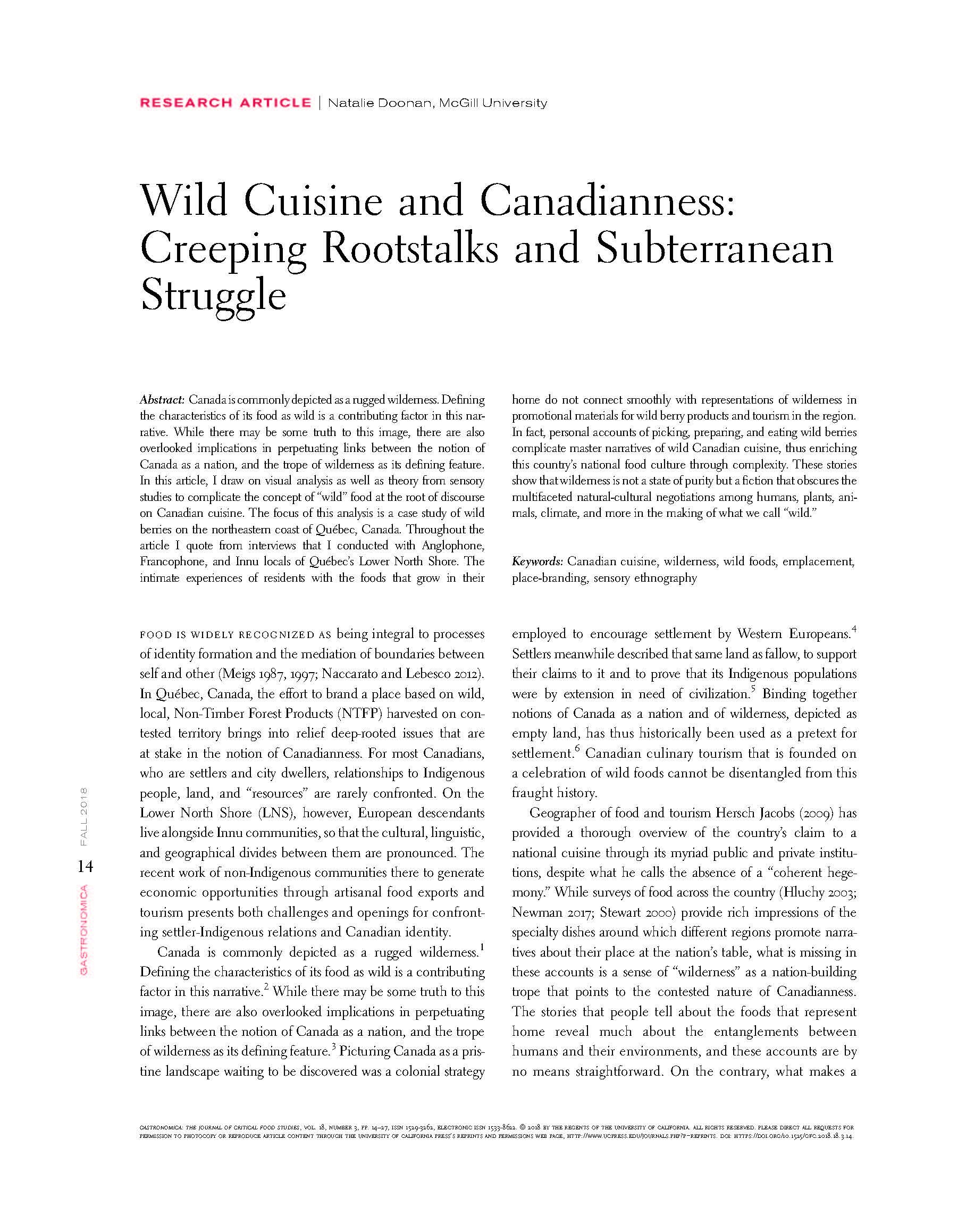
Gastronomica
Wild Cuisine and Canadianness: Creeping Rootstalks and Subterranean Struggle
Gastromomica
Abstract: Canada is commonly depicted as a rugged wilderness. Defining the characteristics of its food as wild is a contributing factor in this narrative. While there may be some truth to this image, there are also overlooked implications in perpetuating links between the notion of Canada as a nation, and the trope of wilderness as its defining feature. In this article, I draw on visual analysis as well as theory from sensory studies to complicate the concept of “wild” food at the root of discourse on Canadian cuisine. The focus of this analysis is a case study of wild berries on the northeastern coast of Québec, Canada. Throughout the article I quote from interviews that I conducted with Anglophone, Francophone, and Innu locals of Québec’s Lower North Shore. The intimate experiences of residents with the foods that grow in their home do not connect smoothly with representations of wilderness in promotional materials for wild berry products and tourism in the region. In fact, personal accounts of picking, preparing, and eating wild berries complicate master narratives of wild Canadian cuisine, thus enriching this country’s national food culture through complexity. These stories show that wilderness is not a state of purity but a fiction that obscures the multifaceted natural-cultural negotiations among humans, plants, animals, climate, and more in the making of what we call “wild.”
Keywords: Canadian cuisine, wilderness, wild foods, emplacement, place-branding, sensory ethnography
Doonan, N. (2018). “Wild Cuisine and Canadianness: Creeping Rootstalks and Subterranean Struggle,” in Gastronomica: The Journal of Critical Food Studies, Melissa L. Caldwell (ed.), XVIII (2). https://doi.org/10.1525/gfc.2018.18.3.14














